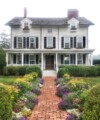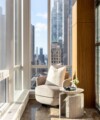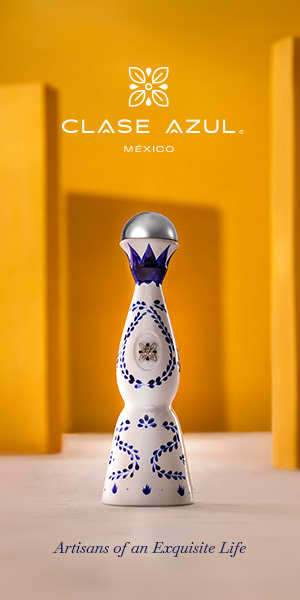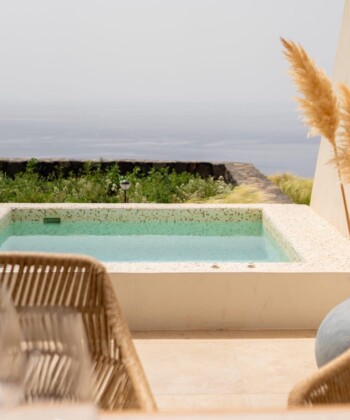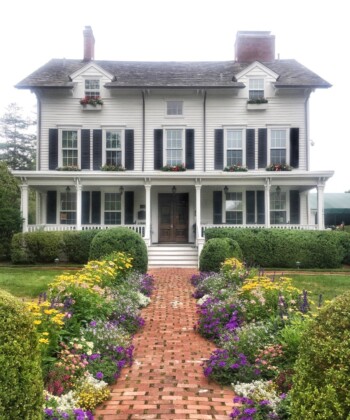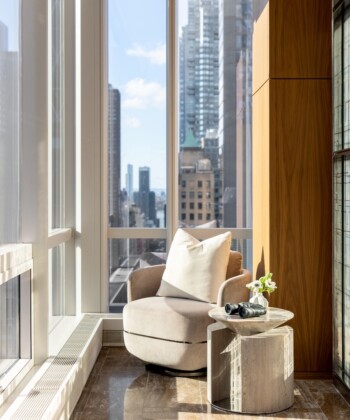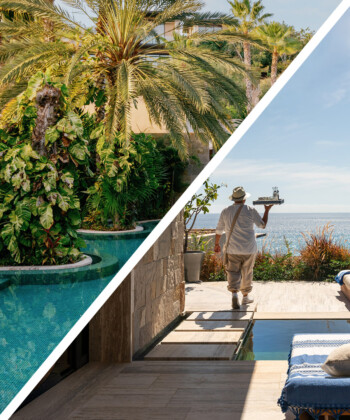France just wouldn’t be the same without its châteaux and the myriad stories each historic estate reveals. Of these revered sites, a select few provide the breathtakingly grand surroundings for some of the country’s most exclusive hotels.
Château Lafaurie-Peyraguey: Bordeaux
Following Villa René Lalique and Château Hochberg, this is the third property in French lifestyle brand Lalique’s hotel portfolio. Château Lafaurie-Peyraguey sits on a hillside overlooking Premier Grand Cru Classé vineyards of the Sauternes appellation in southern Bordeaux. This 89-acre estate has a history dating back to the 13th century, and last year saw the 400th anniversary of its winery, the same year that the first-growth estate saw the fall opening of its lavish new hotel. Lalique designers Lady Tina Green and Pietro Mingarelli led the renovation of the property, integrating art, crystals, and burgundy and green accents into each room, and displaying Damien Hirst’s artwork Eternal Belief (2017) in the chapel. Four underground cellars hold 350,000 bottles of wine, and a crystal barrel of the estate’s 2013 vintage was unveiled earlier this year. A modern glass extension by architect Mario Botta houses the newly Michelin-starred restaurant. Take a seat here to dine on seasonal Sauternes-inspired dishes by chef Jérôme Schilling under a ceiling embedded with 120 gold sémillon vine leaves.

Château Lafaurie-Peyraguey
Château de Montcaud: Languedoc-Roussillon
Debuted last summer, Château de Montcaud celebrates the unique heritage of the area. When the husband-and-wife team Rolf and Andrea Bertschi took the property on, they set about giving the 1875-built château back its identity. Drawing on the region’s history of silk production, the Bertschis decided to weave the silk theme into every aspect of the hotel. French silk features in the Iria Degen and Sophie Petit–designed interiors, chef Matthieu Hervé incorporates silk inspiration into his menus, and the château’s own perfume contains silk enzymes and ingredients from the Silk Road. The couple planted mulberry trees to eventually make silk at the château, and a specially commissioned artwork representing the property’s silk connection hangs in the restaurant. The estate’s parkland also celebrates this rich history, with elements of its design representing the original garden plan, which the couple found in one of the old walls. Stay in the Collain Suite or the two-story gatehouse, La Maison. Dine in the restaurant and bistro, which spill out to shaded spots beneath chestnut trees. And use the château as a base to visit local vineyards such as Domaine la Réméjeanne.

Château de Montcaud’s salon
Relais de Chambord: Loire Valley
When UNESCO declared the Loire Valley a World Heritage site in 2000, the organization named the area an outstanding cultural landscape of great natural beauty for its historic towns and architectural monuments. More than 100 châteaux in this region are open to the public, of which Château de Chambord is the largest. It stands on a vast 13,440 acres of woodland and heathland, where wild boar and deer roam freely. Since its opening last year, the château’s hotel, Relais de Chambord, has made it possible to stay within these sprawling grounds. Prominent designer Jean-Michel Wilmotte led the architectural and interior design of the hotel’s centuries-old building and its new wing, using black-and-white photos of the château as wallpaper and incorporating furnishings by Patricia Urquiola. Make the most of your stay by navigating the estate’s trails with a fitness trainer, cycling along its canal, and taking a hot-air balloon ride over the valley. Back at the hotel, unwind in the intimate spa, and enjoy casual fine dining plates on the terrace of Grand Saint Michel restaurant.

Relais de Chambord’s Junior suite
Hotel Château du Grand-Lucé: Loire Valley
Château du Grand-Lucé was completed in 1760 as the summer palace of Baron Jacques Pineau de Viennay and is now considered one of the finest examples of neoclassical architecture in France. Art has always had its place here. Louis XV commissioned statues for the property, and during World War II, the château housed paintings belonging to the Louvre. The estate eventually passed to the French government, which restored the gardens and buildings, and sold it in 2003 to acclaimed designer Timothy Corrigan, who set about renovating it as his private home. Corrigan sold the property to a new owner in 2017, and it became Hotel Château this year, opening in June. Expect interiors of limestone and white oak floors, walls adorned with boiserie, Persian rugs, chandeliers, and custom fabrics by designers including Pierre Frey, Christian Lacroix, and Jean Paul Gaultier. The Baron Suite stands out for its abundant art, private library, and casement windows overlooking the garden. Savor seasonal French gastronomy and Sancerre in the chapel turned restaurant Le Lucé, relax in the spa and outdoor pool, and explore the 80-acre estate’s classic French gardens and white oak forest.

Hotel Château du Grand-Lucé’s ballroom







